| Shishuang Temple | |
|---|---|
石霜寺 | |
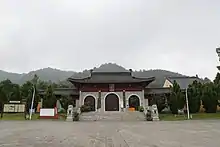 The Shanmen Hall at Shishuang Temple. | |
| Religion | |
| Affiliation | Buddhism |
| Deity | Linji school |
| Location | |
| Location | Jingang, Liuyang, Hunan, China |
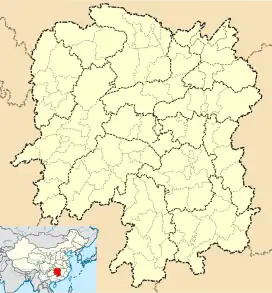 Shown within Hunan 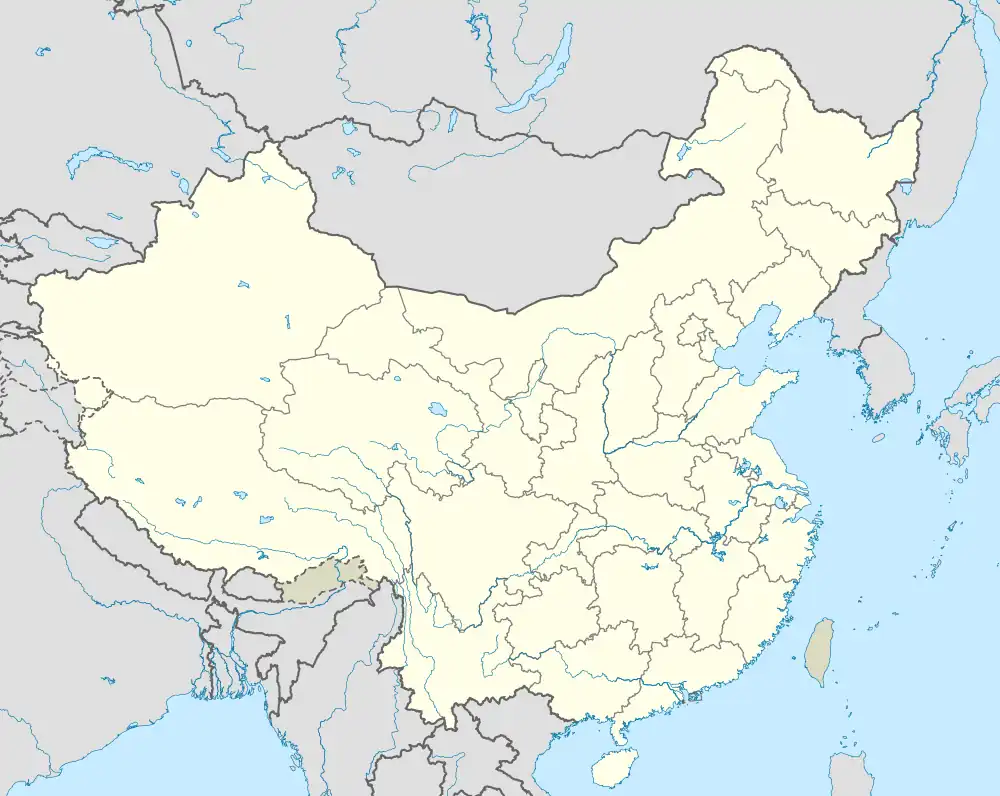 Shishuang Temple (China) | |
| Geographic coordinates | 27°54′46″N 113°39′14″E / 27.91278°N 113.65389°E |
| Architecture | |
| Style | Chinese architecture |
| Founder | Pei Xiu |
| Date established | 874–888 |


Shishuang Temple (Chinese: 石霜寺; pinyin: Shíshuāng Sì) is a Buddhist temple located in the town of Jingang, Liuyang, Hunan, China.[1] In ancient times, Shishuang Temple, Daowu Temple (道吾寺), Baogai Temple (宝盖寺) and Daguang Temple (大光寺) were called "Four Buddhist Temples in Liuyang".[2]
History
Shishuang Temple was first built in the Qianfu period (874–888) of the Tang dynasty (618–907).[1] Emperor Xizong granted the land and the then Prime Minister Pei Xiu supervised the construction of the temple.[1] Li Zhen (李震), the third son of Emperor Xizong, received ordination as a monk at the temple.[1]
During the Song dynasty (960–1279), Shishuang Chuyuan served as abbot.[1] His disciples Yangqi Fanghui and Huanglong Huinan founded the Yangqi sect and Huanglong sect, respectively.[1] Japanese monks Eisai and Garin (monk) came to the temple to study Linji school.[1]
Shishuang Temple went into decline in the Yuan and Ming dynasties (1271–1644).[3]
In 1735, in the 13th year of Yongzheng Emperor's reign during the Qing dynasty (1644–1911), monks rebuilt the Grand Buddha Hall.[3] The Shanmen and corridor were restored in 1794, in the ruling of Qianlong Emperor.[3] And the Great Mercy Pavilion was renovated in 1879.[3]
In 1923, monks refurbished the Mahavira Hall.[3]
After the Cultural Revolution, in 1978, the local government repaired the Shanmen, Four Heavenly Kings Hall, Mahavira Hall, Guanyin Hall, Jade Buddha Hall, Buddhist Texts Library, Guru Hall, etc. In 1991, Shi Weiyi (释唯一), a Taiwanese monk, raised funds to build the Shanmen Hall. The Dining Hall and Meditation Hall were added to the temple in 1993. In 2014, Shishuang Temple has been categorized as an AAA level tourist site by the China National Tourism Administration.[4]
Architecture
The entire temple faces south with the Shanmen, Four Heavenly Kings Hall, Mahavira Hall, and the Guanyin Hall along the central axis of the complex. There are over 10 halls and rooms on both sides, including Guru Hall, Jade Buddha Hall, Abbot Hall, Monastic Dining Hall, Monastic Reception Hall and Meditation Hall.
Ten Thousand Buddha Pagoda
Ten thousand of golden and spectacular small Buddha statues are enshrined on the walls of the Ten Thousand Buddha Pagoda.
Gallery
 Four Heavenly Kings Hall
Four Heavenly Kings Hall Mahavira Hall
Mahavira Hall Guanyin Hall
Guanyin Hall Free Life Pond
Free Life Pond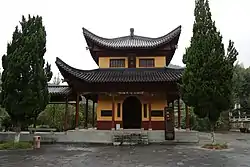 Drum Tower
Drum Tower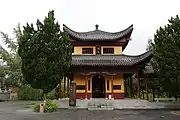 Bell Tower
Bell Tower
References
- 1 2 3 4 5 6 7 Zhao Haiyan (2014), p. 39.
- ↑ Dai Peng (2013). 到浏阳,来一次千年古刹游感受心灵深处宁静. 浏阳日报 [Liuyang daily] (in Simplified Chinese). Liuyang, Hunan: Liuyang Daily Group.
- 1 2 3 4 5 浏阳石霜寺(图) [Shishuang Temple in Liuyang]. Sina (in Chinese). 6 January 2013. Retrieved 27 October 2020.
- ↑ Yan Kaiyun; Li Xiao (2016). 浏阳金刚镇将建设4A级石霜寺景区. 长沙晚报 [Changsha Evening News] (in Simplified Chinese). Changsha, Hunan: Changsha Evening News Group. ISSN 1673-1344.